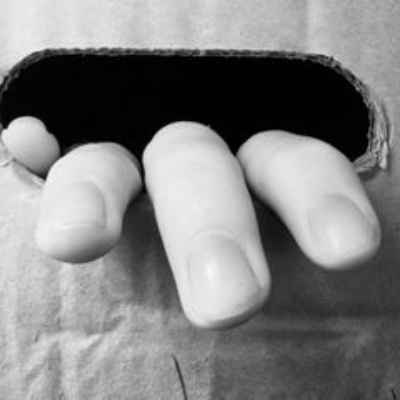Story of a UWC House Parent & Art Psychotherapist

Nicky Shaw is a House Parent at UWC Robert Bosch College, where she also volunteers as an Art Psychotherapist. She is currently completing her training with CATA (Canadian Art Therapy Association). Nicky has also been an IB DP Visual Arts teacher, is a new IB examiner and has a BA degree in Photography.
“I am new to UWC: my wife and I joined as a family last year. She is the Chemistry teacher here at UWC Robert Bosch College. We have tracked UWC's movements over the past year and the opportunity to work and live here was too good to let go. UWC is unique and the community spirit is definitely felt on campus. We are grateful that UWC Robert Bosch College is open and welcoming to the LGBTQ community and continues to explore how to host and action this love on a daily basis. Our daughter is 16 months old and is one of two campus babies. It is delightful to see her grow up in this environment, mixing and being with people from all over the world!
Due to being a full-time mummy until recently I have got involved mainly in the school’s Focus Days. Last year there was the Conflict & Resolution Day and this year there was a Sustainability Focus Day. In both occasions, I provided all day art workshops. I enjoy seeing the staff and students grapple with real life issues and explore them through the medium of visual arts. Often my workshops use textiles or 3D materials, becoming installations and artworks in their own right. The main focus is the process, but often the end product is of value too. At RBC there is no music teacher and only two visual arts classes. Therefore, providing opportunities for the community to express and explore their opinions through art is so important.
With the Visual Arts class last year I facilitated the first years through a unit of Photography learning. Most of their ideas blew me away; a lot of the kids here really think deeply about so many matters. Here, art and photography as non-verbal medias give a voice to emotions that the students cannot put into words.
What makes me passionate? I am passionate about people understanding each other for a better world and for humans to not default to operating through fears but to operate through understanding and hope. I also love photography, especially documentary photography. I'm interested in how photographic images can be used with clients in art therapy”.
Environmental Sustainability Day
The art workshop on Environmental Sustainability Day was a chance for students to work through visual arts (specifically through installation and sculpture), to comment on sustainability matters through the issues of transitional living spaces also known as 'semi permanent dwellings'. Prompts were used with participants to create a discussion on the impact of transition to those involved. Prompts were looking at positive and negative aspects. It was a dynamic workshop: those that participated got to shape the installation and commentary, bearing in mind the larger concept of sustainability.
“I was moved throughout the day about how engaged the RBC students were. Some had never done any visual art exercise for years. The mature discussions that came from the community interacting with the artists and artworks later on in the afternoon was fabulous. A real sense of the cycle of the communication between the art, artist and viewer. Artworks had been created about the Syrian Refugee crisis, climate refugees, the resilience of being in nomadic situations, moving continuously and only taking essential items (in the end only yourself), the turmoil of moving, the trash people can leave behind… The ideas had breadth and depth”, Nicky said.
Conflict Resolution Day
The art workshop on Conflict Resolution Day invited participants to create a conflict resolution dreamcatcher. Weaving in groups crosses so many cultures, and during these gatherings stories are often shared. During the workshop participants created the conflict catchers (akin to the Native American dream catchers) and used beads to represent any conflicts in their personal lives, past or present. These conflicts were not verbally shared, but the artwork and space held and acknowledged the conflicts. As participants were weaving in silence, stories from around the world were narrated, sharing the voice of men and women who had endured conflict and were now able to share their stories as survivors on the other side.
